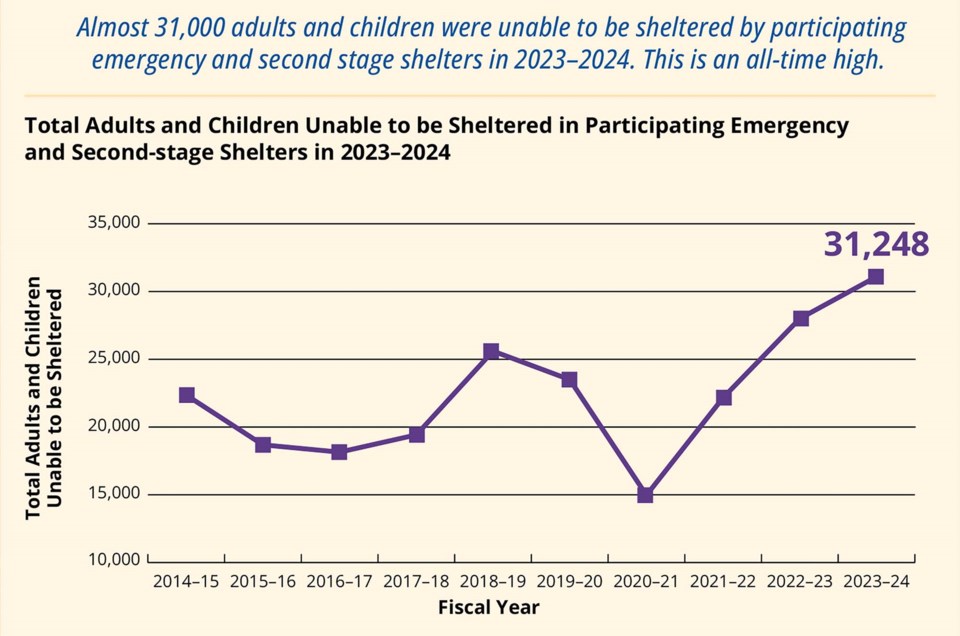The number of people turned away from domestic violence shelters reached an all-time high last year in Alberta, a new report shows.
The Alberta Council of Women’s Shelters released its annual report on domestic violence shelters in Alberta on April 7. The report studies trends at about 50 domestic violence shelters run by 41 groups in Alberta, including Jessie’s House in Morinville (which serves the St. Albert/Sturgeon County region).
The report found Alberta’s shelters responded to 53,391 calls for help in fiscal year 2023-24, admitting 8,136 people into shelters.
Some 31,248 people who sought admission to a shelter last year had to be turned away because of lack of space (about 64 per cent) or resources (about 36 per cent), the report found — 12 per cent more than the previous year and the highest amount in Alberta’s history. For every one person that got into a shelter last year, four others did not. About 40 per cent of people turned away from shelters were children accompanying adults, a 10-year high.
Cat Champagne, executive director of the Alberta Council of Women’s Shelters, said she hopes these “alarming” trends would push the province to better support Alberta’s emergency shelters.
“Our shelter space hasn’t changed in some time,” she said, and there’s not enough room to meet the need.
Funding shortage
Jessie’s House in Morinville actually saw a dip in the number of people it admitted last year, said Jessica Montgomery of the Jessica Martel Memorial Foundation (which runs Jessie’s House) — not because they had less demand, but because those that did get into the shelter had to stay longer. Alberta's affordable housing crisis meant many survivors had to stay in shelters longer since they couldn't find an alternative place to live. Shelters also saw more new immigrants at their doors, and newcomers often need more time to pick up job skills and enrol in government support programs.
The report notes wages for front-line workers in shelters have not changed since 2015 and are now about 15 per cent below the provincial average, which make it more difficult for shelters to hire staff. About 30 per cent of shelters have cut programs since April 1, 2023, with most doing so because of money shortages.
Champagne said the province’s commitment of $19 million over three years for shelters in its most recent budget could help address these shortfalls.
In an email, Daniel Verrier, press secretary for Alberta Children and Family Services, said Budget 2025 included about $60 million for women’s shelters and a one-time 3.5 per cent increase to operational funding, the latter of which could be used to add beds, reduce wait-lists, or other purposes.
St. Albert MLA Marie Renaud said in an email that the “disturbing and heartbreaking” figures in this report show how the provincial government was failing to protect adults, children, and seniors fleeing abuse. She called on the province to fund more shelter spaces and hire more people to provide wrap-around services like child-care support.
“Albertans deserve better than a government that sees the desperate need for more safe spaces and instead decides to reduce funding for community-based programs to prevent family-based violence,” she said.
Champagne said Albertans can help emergency shelters by asking government leaders to increase funding for them. They can also volunteer at shelters and learn more about how to prevent domestic violence.
“One of the biggest concerns for someone that’s coming forward with a story of abuse is that somebody’s not going to believe them,” Champagne said; offering to listen to and support a survivor can be of great help.
St. Albert and Sturgeon County-area residents can support Jessie’s House directly by taking part in the Break Free Run this June 21, Montgomery said.
The council’s report can be found at acws.ca/strength-in-numbers-2024.



